I originally shared this simple recipe way back in 2006, but am updating it today with more tips and options. This easy homemade roasted nut butter works with almonds, peanuts, pecans, walnuts, cashews, and even seeds. Enjoy it on toast, bagels, sandwiches, rice cakes, or in your favorite recipes. I even use it as a “frosting” on muffins. You’ll love the natural taste so much that you may just forgo buying the jars in the future.
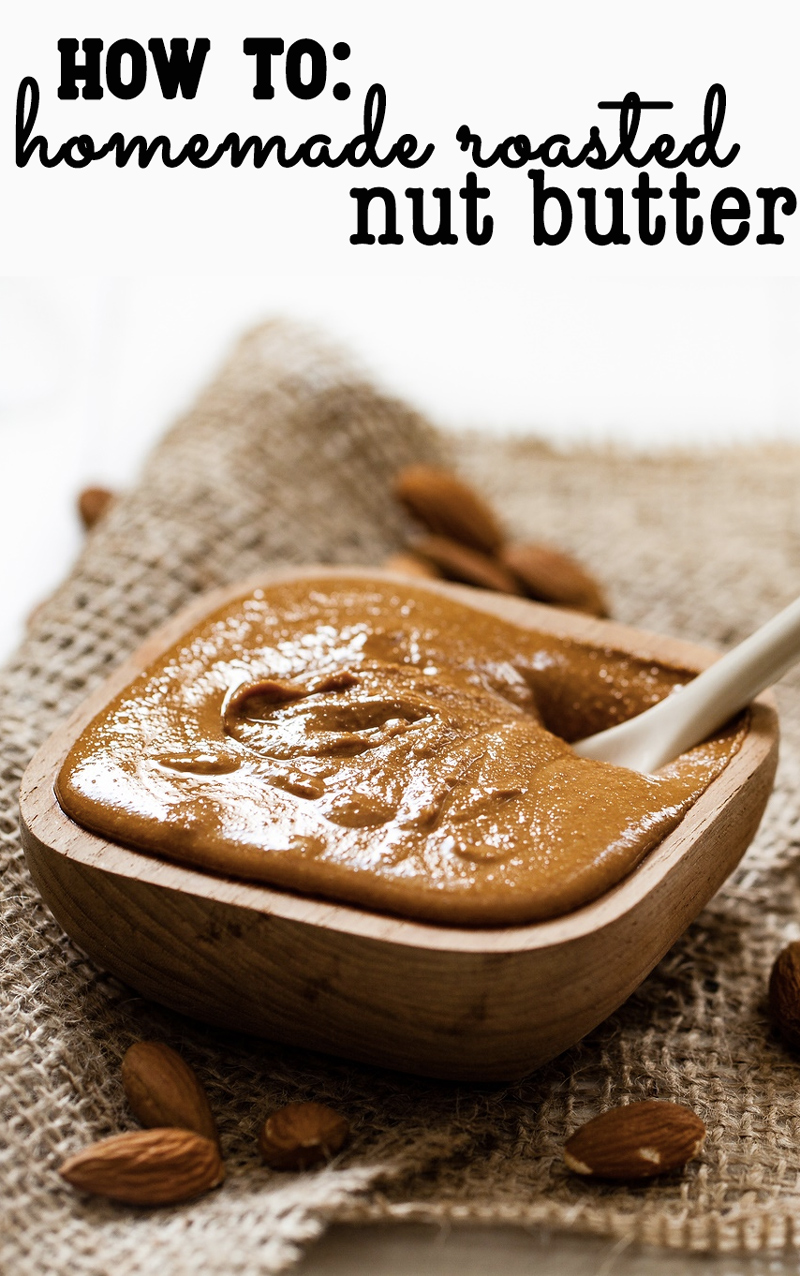
Homemade Roasted Nut Butter: A Quick ‘How to’ Recipe with Options
This is a basic and very versatile recipe. So I’ve provided some tips and options below to help you customize it to your taste, dietary needs, supplies, and ingredients.
Why Make Roasted Nut Butter?
Sometimes it’s cheaper to make your own, sometimes it’s not. I definitely recommend pricing around. But homemade roasted nut butter has some big advantages, not the least of which is taste. It is so much fresher, and full-bodied than any pre-packaged jar that’s been sitting on the shelf. I also like being in control of the ingredients. You can add salt, or not (though I recommend it!), you can skip oils or additives, and you can add extracts and spices to flavor it as you wish!
Which Nuts are Best?
 Roasted nut butter is delicious with almost any nut. My favorites are still cashews and almonds, but I do like using a blend of nuts. This recipe is actually a great way to use up small amounts of different nuts that you have on hand. Just keep in mind, the creamier the nut, the creamier the nut butter. Macadamias, pine nuts, hazelnuts, cashews, and almonds will yield fairly creamy, smooth results. While nuts like pecans and walnuts add a more rustic vibe to the taste and texture. You can also use seeds (for nut-free), but they don’t always blend as smooth, and tend to have a stronger taste. You can also add coconut shreds or flakes for a creamier, coconut-influenced nut butter.
Roasted nut butter is delicious with almost any nut. My favorites are still cashews and almonds, but I do like using a blend of nuts. This recipe is actually a great way to use up small amounts of different nuts that you have on hand. Just keep in mind, the creamier the nut, the creamier the nut butter. Macadamias, pine nuts, hazelnuts, cashews, and almonds will yield fairly creamy, smooth results. While nuts like pecans and walnuts add a more rustic vibe to the taste and texture. You can also use seeds (for nut-free), but they don’t always blend as smooth, and tend to have a stronger taste. You can also add coconut shreds or flakes for a creamier, coconut-influenced nut butter.
What Additions are Best?
Really, the sky is the limit. But some of my favorites are ground cinnamon, pumpkin pie spice, vanilla extract, chia seeds, and hemp seeds. If you’re a chocolate nut butter fan, cocoa powder or even melted dairy-free chocolate is a good bet. If you want to add some sweetness, you can use your sweetener of choice, to taste. Regular cane sugar, maple syrup, honey, coconut sugar, etc, all work great and add their own unique flavor influences.
Should I Use Oil? What Type?
I do not add oil unless absolutely needed. Most of the time, if I continue to blend, the nuts become creamy on their own. But it happens that nuts lack enough oils to process properly. If so, add just a touch of oil – not much at all. The effects of added oil are exponential. I would use a neutral-tasting oil. But if you want a “no stir” nut butter, you can use a little melted coconut oil, palm oil, or even cocoa butter. Once it’s fully blended, store it immediately in the refrigerator. Those oils will set up, and help to prevent the nut butter from separating.
Nut Butter Equipment Options
Consider your equipment when choosing the batch size that you want to make. If you have a larger food processor, you’ll want to make a full batch. With smaller food processors, you can make smaller batches, or prepare it in batches, if needed. I typically make it in a grinder, in smaller batches. I find that a personal blender with grinder blade and cup works like a dream, but I’ve also made nut butter in a cheapy spice grinder with ease.
Can I Use Homemade Roasted Nut Butter in Recipes?
Yes! It works great in recipes, and can even be used in place of peanut butter in most recipes to mix things up. The only time you might have trouble is if a recipe calls for a peanut butter that uses additives specifically.
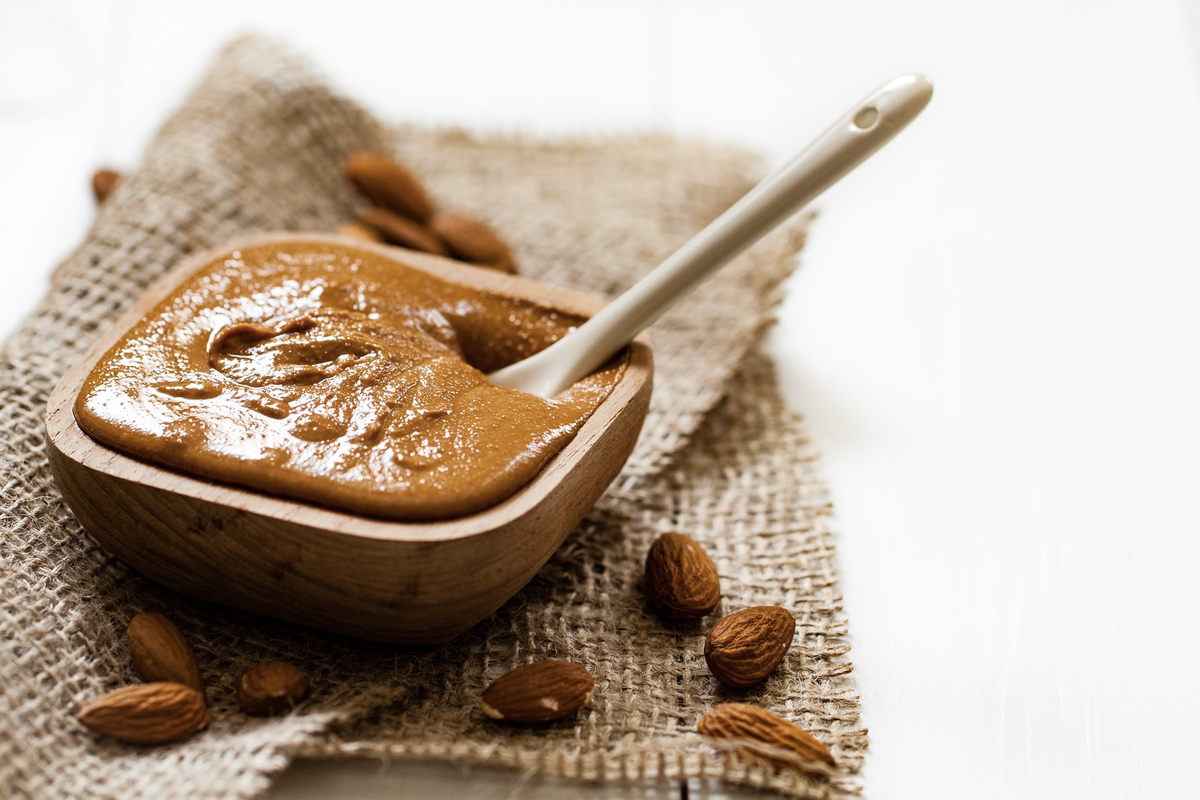
Special Diet Notes: Homemade Roasted Nut Butter
By ingredients, this recipe is dairy-free, egg-free, gluten-free, optionally nut-free, optionally peanut-free, soy-free, vegan, plant-based, paleo, keto, and vegetarian.
- 3 cups (1 pound) raw nuts (see post above for recommendations)
- Oil, as needed (optional; see post above for options)
- ¼ to ½ teaspoon salt, to taste
- Preheat your oven to 350ºF.
- Spread the nuts out on a baking sheet and roast them for 5 minutes. Stir the nuts, and roast them for another 5 minutes. Stir again, and roast them for up to 5 minutes more, until toasted, but not burned. Keep a close eye! Once you can smell them, it's often too late.
- Allow the nuts to cool for at least 10 minutes.
- Pour the nuts into your food processor (or in batches in a grinder), and grind until the oils begin to release and the nuts form a paste. If it is too thick, you can add just a touch of oil for a smoother consistency. Add the salt, and process until smooth and creamy (or you can leave it a little "rustic" if preferred).
- Scrape the nut butter into an airtight container. I recommend storing it in the refrigerator for freshness.
Great Dairy-Free Recipes Using Nut Butter
Easy Instant Nut Milk
No Bake Chocolate Almond Butter Squares
Almond Butter Green Smoothie Bowl
Want More Dairy-Free Recipes? Get Eat Dairy Free:
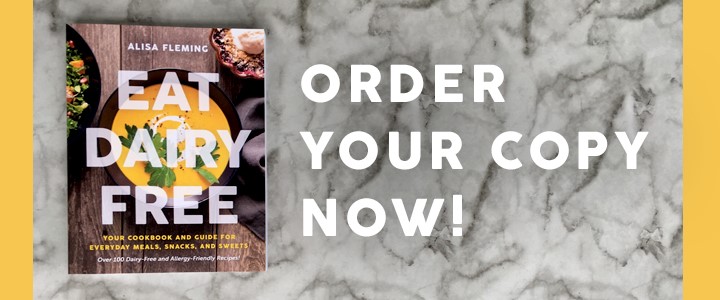


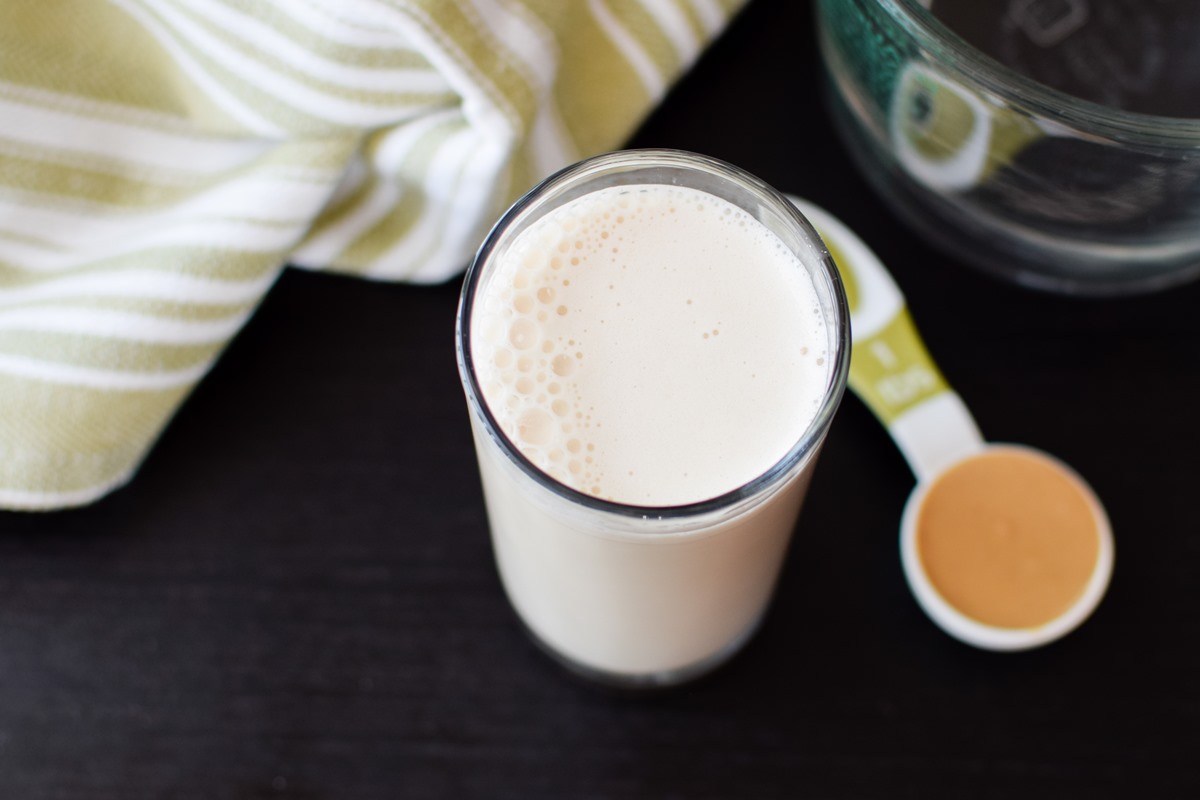
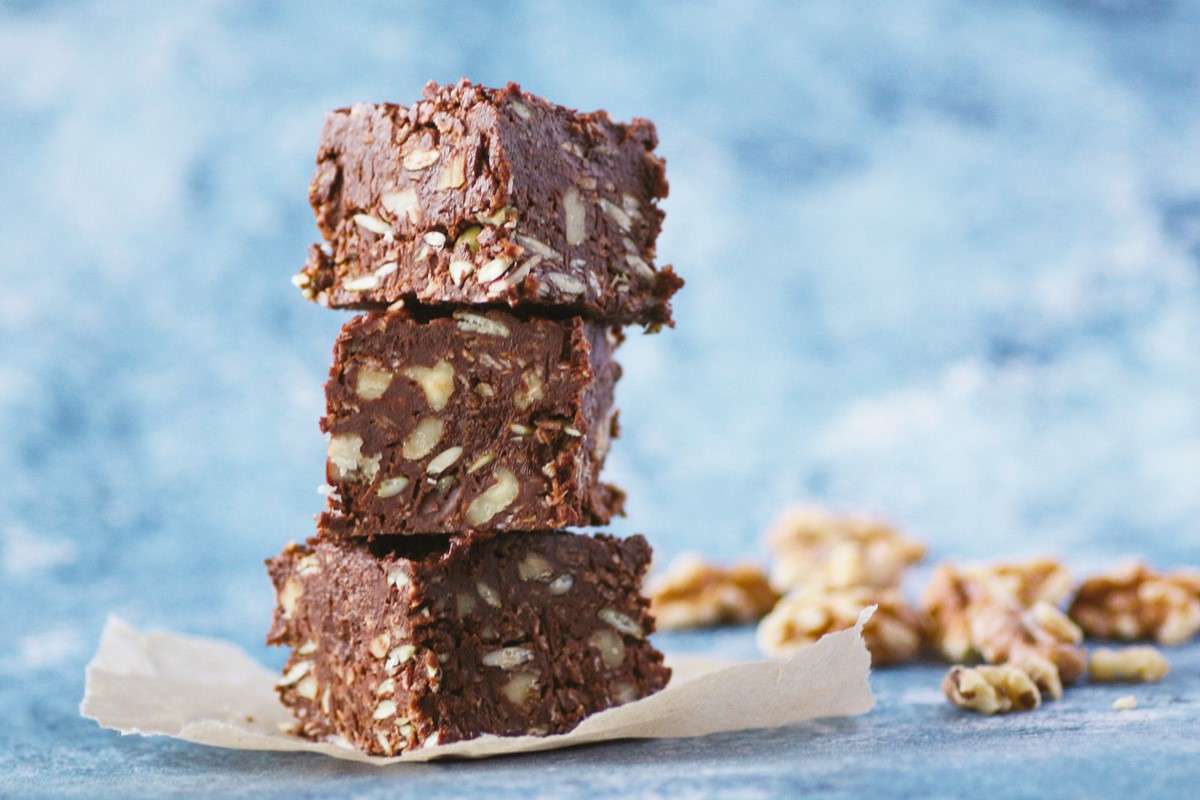
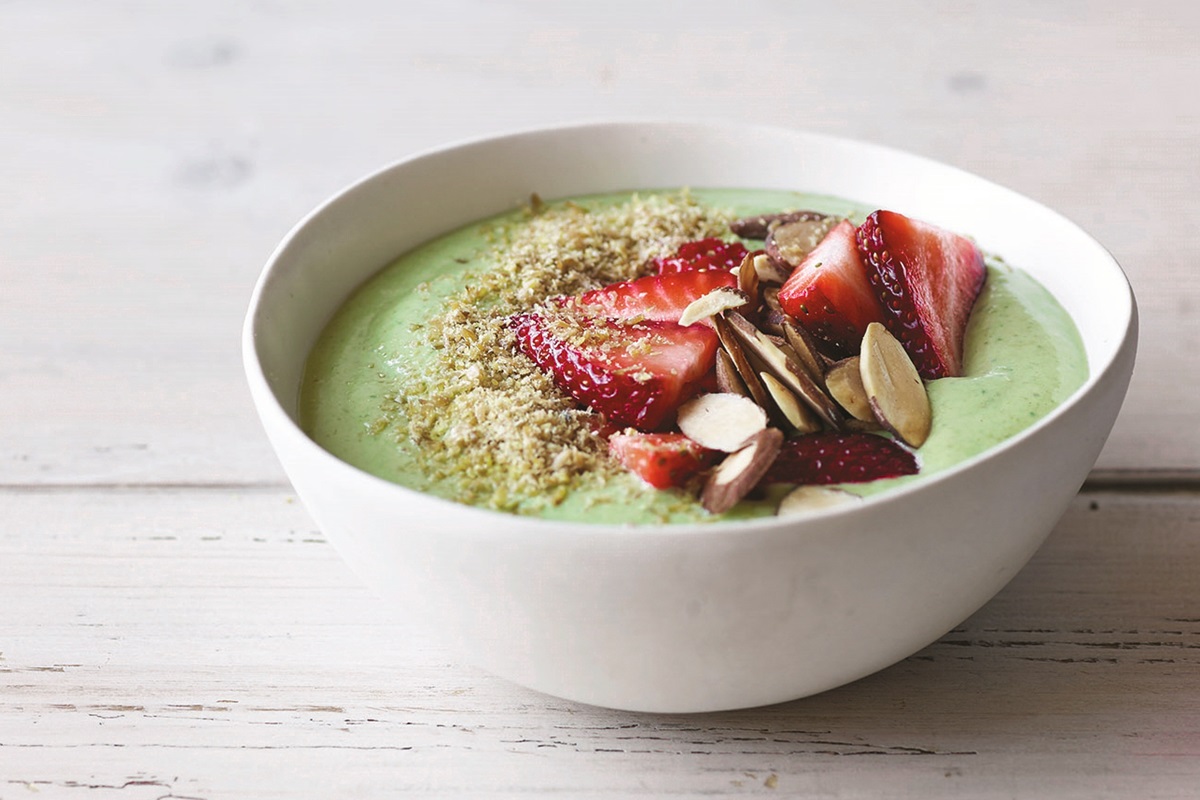
2 Comments
Pingback: Peanut Butter Protein Balls Recipe (Dairy-Free, Gluten-Free)
Pingback: Caroline’s Favorite All-Natural Snacks for Energy and Health. | Caroline Jordan